17/01/2024
Plough Day is approaching - does it really have to happen?
Source: Landwirtschaftskammer OÖ
The earliest ploughing under ÖPUL cover crop variant 3 can take place soon, starting November 15th. Every year, the question arises as to whether using a plough to plough well-developed cover crops now in the fall is even advisable. From a soil and water conservation perspective, the answer is a clear no.
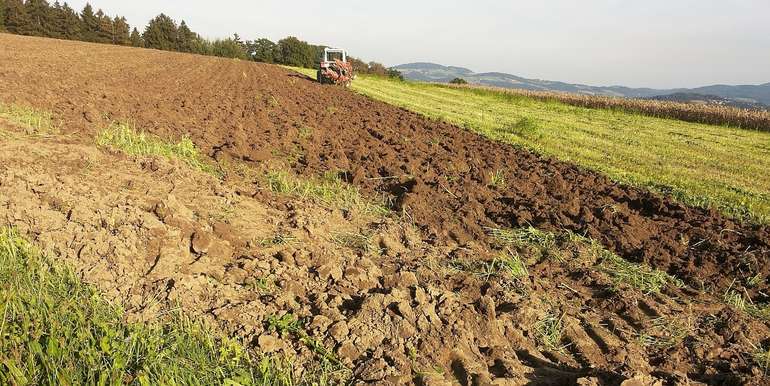
When plowing in cover crops, erosion protection is essentially ploughed in – the advantages clearly outweigh the disadvantages! © BWSB/Wallner
In the autumn 2020 application, 2,077 farms in Upper Austria chose ÖPUL greening option 3 and greened an area of 10,618 hectares, which were most likely also plowed in autumn 2020. The trend is moving in the right direction – in 2019, there were 2,274 farms (an increase of 197 farms) with an area of approximately 11,500 hectares. Figures for 2021 are not yet available. Participants in the ÖPUL measure "Preventive Groundwater Protection on Arable Land" are not permitted to apply for this option. This will also be the case for the new ÖPUL measure for groundwater protection in Upper Austria.
Maintain soil structure!
Early planted catch crops have once again produced a lot of root mass and built up good soil structures.
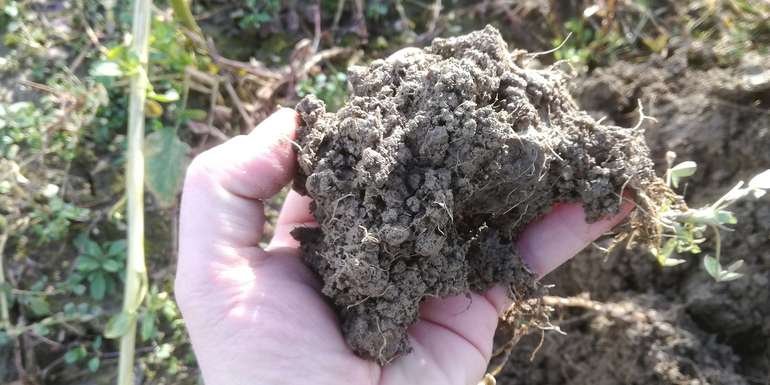
The established soil structure must be maintained over the winter!© BWSB/Wallner
Ploughing in cover crops now in the fall places stress on the soil, especially on soil biota, because the low soil temperatures prevent the organic matter from decomposing (“silage” and plough bottom compaction). On the other hand, the susceptibility to erosion in the following crop, particularly corn, millet, soybeans, and sugar beet, increases dramatically in the spring, depending on the slope, length, and soil type. The primary goal must therefore be to maintain the established soil structure over the long term.
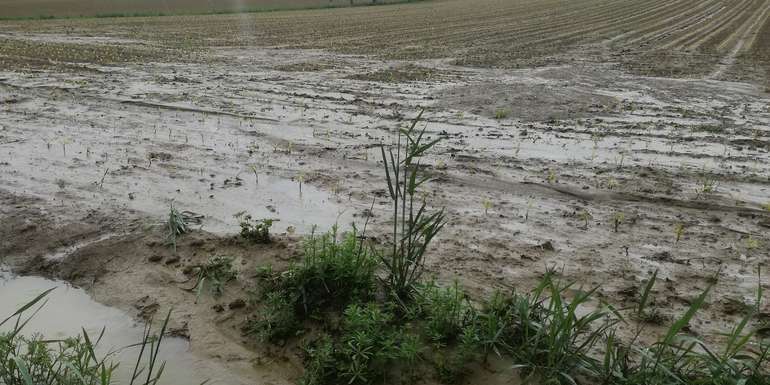
This loss of valuable soil could have been largely avoided with a high-quality cover crop, followed by mulching or direct sowing of the corn. Also, given the high prices of mineral fertilizers, it is important to avoid nutrient losses in all directions! © BWSB/Wallner
Protect surface waters!
Large quantities of valuable soil can be lost within just a few minutes, subsequently polluting our waters with nutrients, especially phosphorus. The European Water Framework Directive sets the "good status" for our lakes and rivers as a central goal. Erosion-related inputs of phosphorus, nitrogen, and other substances are jeopardizing this "good status" in some Upper Austrian waterways.
These inputs into water bodies are linked to the discharge of substances from agricultural land and the loss of soil, the valuable basis for agricultural production. The goal of every agricultural measure must be to reduce nutrient inputs, especially of phosphorus and nitrogen, but also of pesticides, into surface waters. Unfortunately, some water bodies are in moderate condition. The goal must be to restore these water bodies to good condition and achieve long-term improvement.
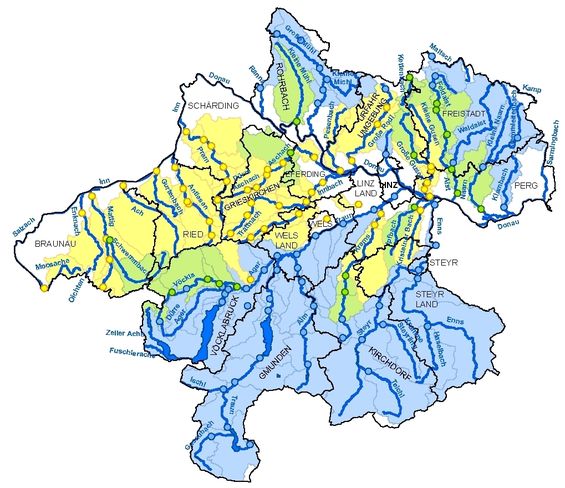
Status of surface waters regarding orthophosphate, 2020, Upper Austria (blue: very good; green: good; yellow: moderate). It is striking that nutrient pollution of surface waters is particularly higher in regions where the ÖPUL greening variant 3 is increasingly used. © Land OÖ
Practitioners show how it works
For Engelbert Hofbauer from St. Marien in the Linz-Land district, replanting the grass in the fall is out of the question. Engelbert Hofbauer participates in the ÖPUL (Preventive Groundwater Protection on Arable Land) program and cultivates land that is particularly susceptible to erosion due to its high silt content and topography during heavy rainfall events. He is an absolute expert in mulching and direct seeding. He has decades of experience in testing erosion-inhibiting cultivation methods.
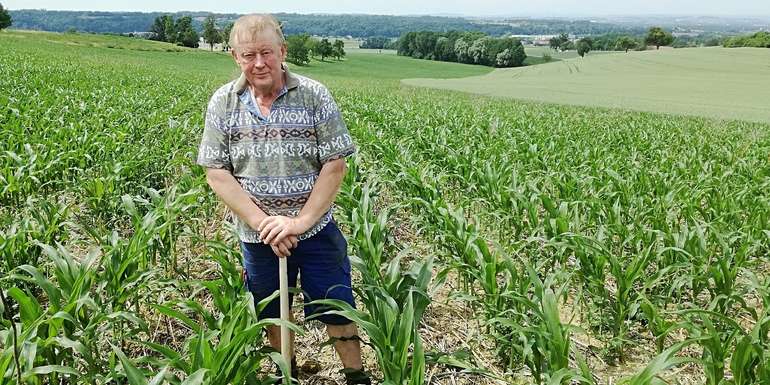
Every year, Englbert Hofbauer demonstrates how soil and surface water protection can be achieved with cover crops and optimal mulch or direct sowing. This year, he was once again very pleased with the yields of his corn crops, which were planted using direct sowing. © BWSB/Wallner
Conclusion
Cover crops in the fall fulfill a variety of functions. They enrich the landscape, increase biodiversity, protect against nutrient loss "in all directions," and guarantee comprehensive erosion protection in the spring. Greening variant 3 of the ÖPUL measure "Greening of arable land - cover crop cultivation" can be plowed starting November 15th—but it doesn't have to be!
Take the quote from Thomas Aquinas to heart: “Miracles require prayer, but change requires work!” Avoid plowing cover crops in the fall and thereby improve your soil structure and the quality of our surface waters in the long term.
Information from Soil.Water.Protection.Consulting,(050/6902-1426), www.bwsb.at.
